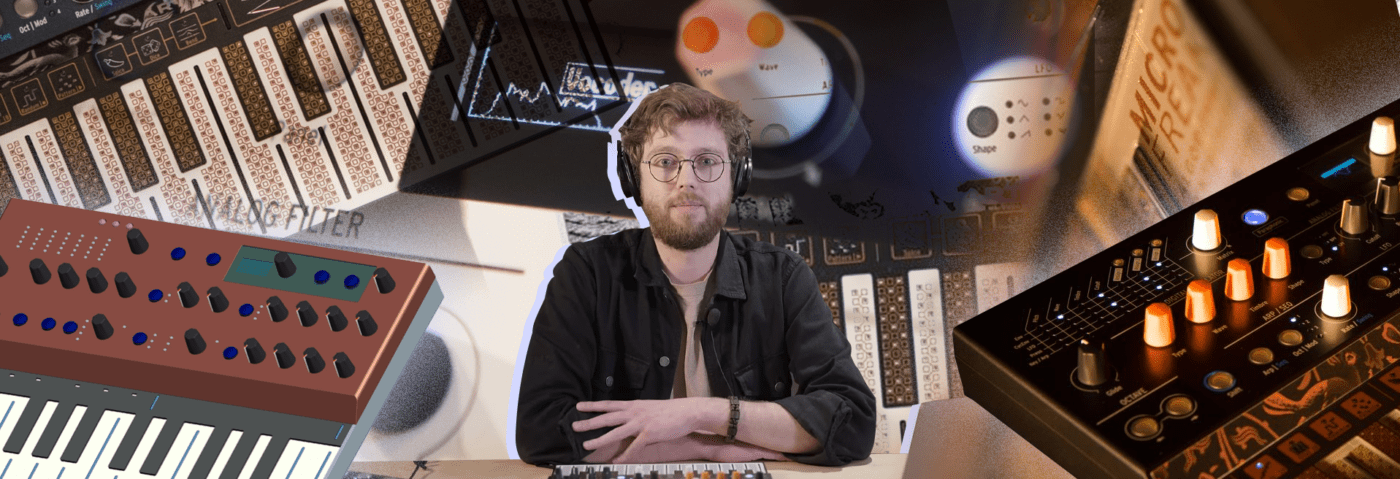We spoke with Sébastien Rochard, Product Lead on the Arturia MicroBrute, on how the company’s trend-busting digital synthesizer went from idea to realization.
Didn’t see that coming. When Arturia debuted the MicroFreak at the 2019 winter NAMM, the hardware world uttered a collective cry of “What the what?” Here was an utterly unique digital synthesizer arriving amidst a torrent of analogue. A plethora of digital synthesizer engines, an extensive modulation matrix, a multimode analogue filter, and unique surprises like randomisation functions. It even forewent a traditional keyboard in favour of a capacitive touchplate. While it may have seemed to come out of nowhere, Arturia had been quietly working on it for two and half years at that point.
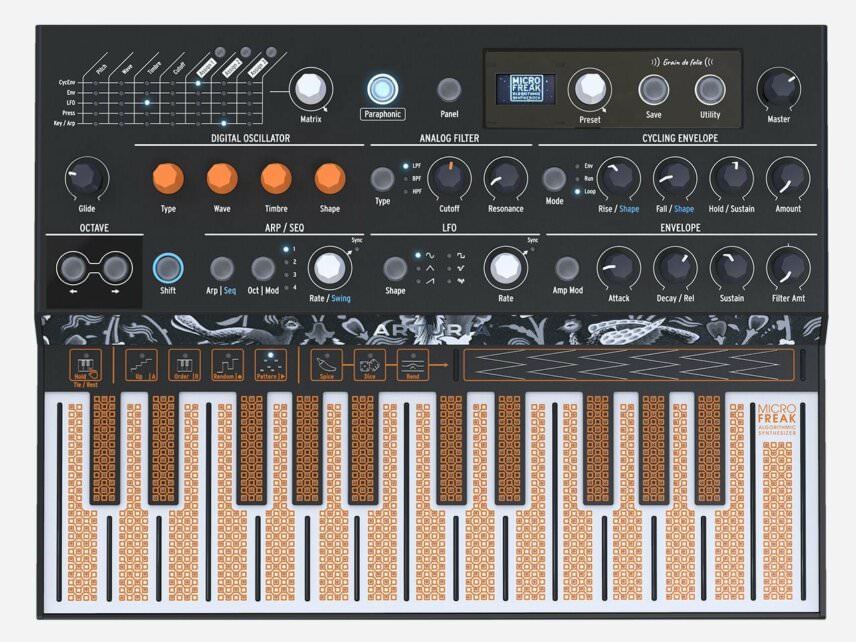
This is the story of the MicroFreak.
Looking Sideways At The Start
Sébastien Rochard started at Arturia as an intern in 2012. Now he’s a Product Lead, helping usher instruments like the MicroFreak into the world. Talk about a dream job. He took us through the MicroFreak story, from its humble beginnings as an offshoot of another famous Arturia synth through to its launch.
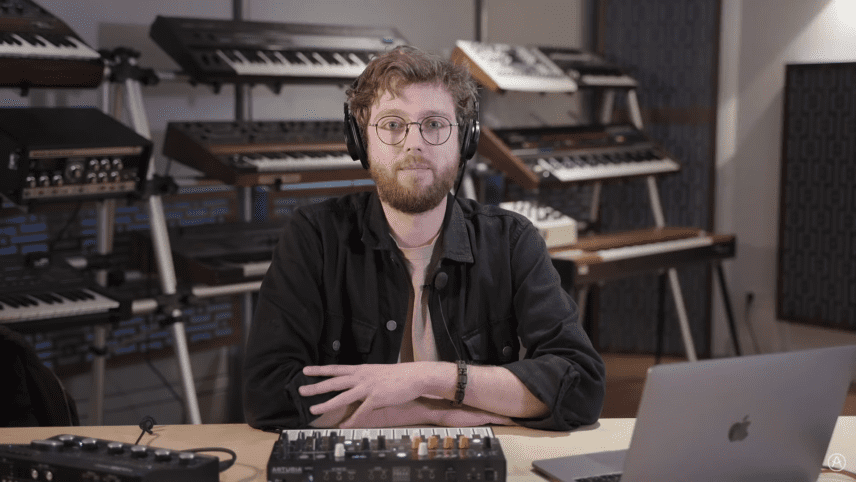
“It’s funny,” he told us when we ask about the original idea for the digital synth. “In the case of MicroFreak, we initially wanted to make a smaller MicroBrute.” That was an unexpected answer. “(We were) trying to create an instrument we could sell for 200 euros. We really struggled to keep the essence of the Brute synthesizers (intact) and also make them cheaper. It’s not like you can really remove a lot of it and still keep an instrument that is relevant. So ultimately, we decided to look sideways and bring more digital aspects into the instrument.”
Rochard was quick to point out the other team members involved. “I won’t take all the credit for this instrument,” he explained. “It was initially designed by Glen Darcey (now at Ashun Sound Machines), who was product manager for Arturia at the time. When he left like four years ago, I (took over) work on the instrument.”
Going Digital
Given Arturia’s success with analogue instruments, and also the general trend of instrument design (remember, development on the MicroBrute started way back in 2016), there must have been quite a leap of faith to go ahead with such an unabashedly digital instrument like the MicroFreak.
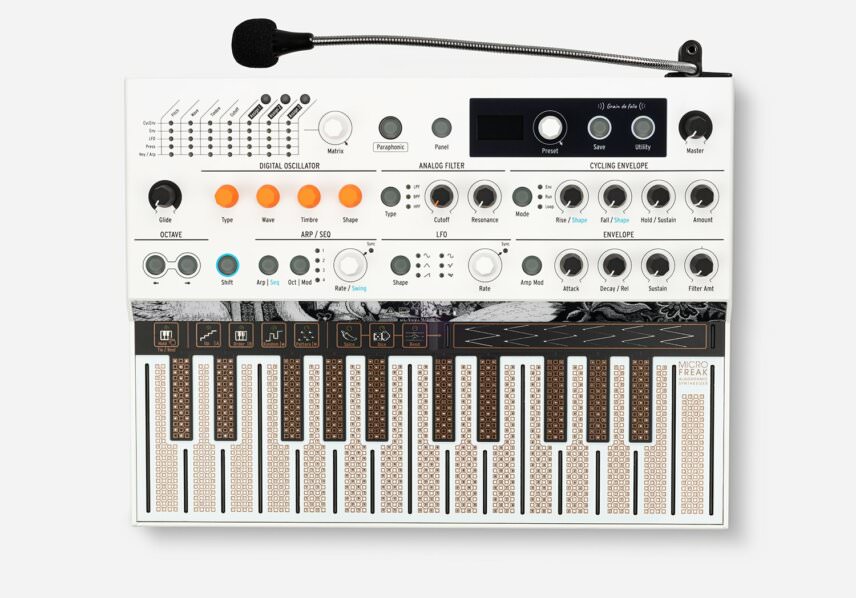
“I think the reason why we looked more at digital was that both Glen and I were interested in Eurorack,” Rochard pointed out. “And that, at that time, there was a trend that we could sense of a digital revival. I think it was driven in large part by Mutable Instruments and Braids. People could see that digital is not a bad word in synthesizers.”
How about the oscillator engines? The MicroBrute has a number of different types of digital engines, from wavetable to FM to speech synthesis.
“We looked at this from another direction: what could we make with a digital synthesizer? Initially, it was mostly wavetables but then we felt like we could bring in different oscillator types. We went to this paradigm of having a selection of different oscillator engines, and these three controls (each oscillator engine has three controls that are different for each type), and then the rest of the instrument. The fact that you can explore different types of synthesis was something that we really believed in.”
With so many engines, though, how did they decide what to include?
“We looked at the different synthesis techniques that exist,” said Rochard, “which gave us a first reference point. Mutable Instruments released Plaits, and we met with Emilie to discuss including some of our favourite Plaits engines in MicroFreak. We designed the other engines ourselves.”
The recent V3.0 firmware update also introduced three new engines, courtesy of the Eurorack company, Noise Engineering.
“When we partnered with Noise Engineering we let them design the engines that they wanted. This is because we wanted the engines to have their own ‘sound aesthetic,’ not Arturia’s. The only constraint they had was that the engines had to provide three parameters.”
And what is Rochard’s favorite engine?
“I use the Plaits virtual analogue engine very often. Recently I have made a lot of sounds with all three Noise Engineering engines.”
Get In Touch
Unusually for a synthesizer, the MicroFreak has capacitive touch plate keys. We wanted to know if this was part of the plan from the beginning.
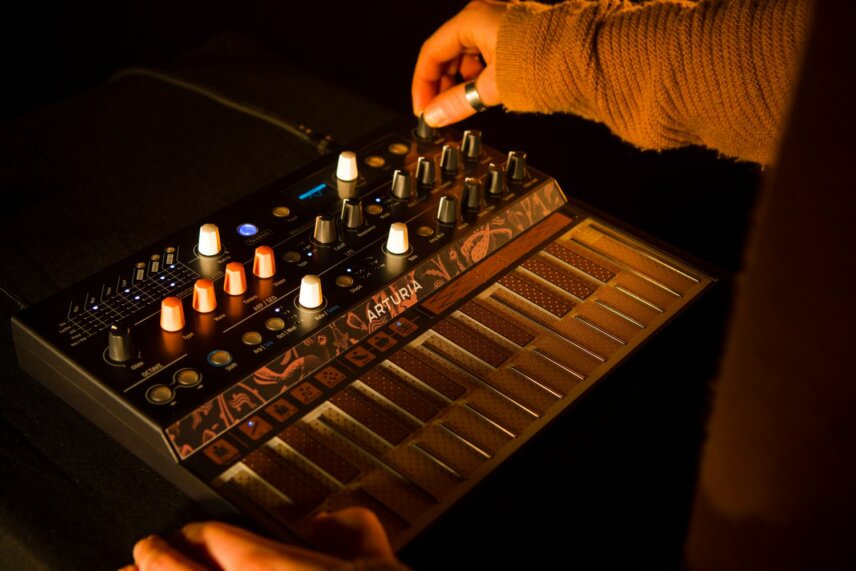
“It was part of the plan,” Rochard explained. However, he was quick to point out that, “We asked a lot of people about it to be sure that it was the right move.”
When we first saw it, we recalled the Electronic Dream Plant Wasp, although Arturia actually drew inspiration from another famous synthesizer. Any guesses?
“Inspiration came from the Buchla Music Easel,” said Rochard, “but we were also looking at… Eurorack touchplate keyboards at that time.”
While the touchplate can offer things that a normal keybed can’t – new ways of interacting with the instrument, for one – there’s always a risk involved when trying something new.
“It is risky to move away from the keyboard,” Rochard agreed, “as it’s an interface people are used to. Looking at forums, however, there seems to be positive feedback on this interface.”
The Price Is Right
Price must surely affect what will go into a new synthesizer. Although the MicroFreak started life as a cutdown MicroBrute with a target of 200 euros, the price was raised back to 299 euros when they decided to go in a new direction. We wanted to know, though, if there were any functions that they couldn’t implement because of cost.
“Naturally some features are left out because of the price,” explained Rochard. “Juggling the price and feature set is always part of a product design. In the case of MicroFreak, I don’t feel like there is an area that is missing. The instrument makes sense on its own. I like to apply effects afterwards (when I use it in my music), but effects are easy to add from the outside. I don’t feel like I am missing a modulation source, for instance, which would be a problem.”
Modulation Matrix
Speaking of modulation, the MicroFreak has an extensive modulation section, something that is somewhat surprising for an instrument of this price. We asked if this was planned from the beginning.
“Yes,” affirmed Rochard, saying it was part of a legacy that includes the MatrixBrute, Pigments, and PolyBrute. “It’s part of the design principles of Arturia to have modulation as a central point of a synthesizer interface, not as something secondary.”
To achieve this, they re-used the matrix design from the MatrixBrute, adapting it to the smaller size.
Analogue In The Digital
The MicroFreak has an Oberheim SEM-style analogue filter. It does a great job of adding warmth to the sometimes cold digital edge of the synthesizer. We wondered if this was also planned from the beginning.
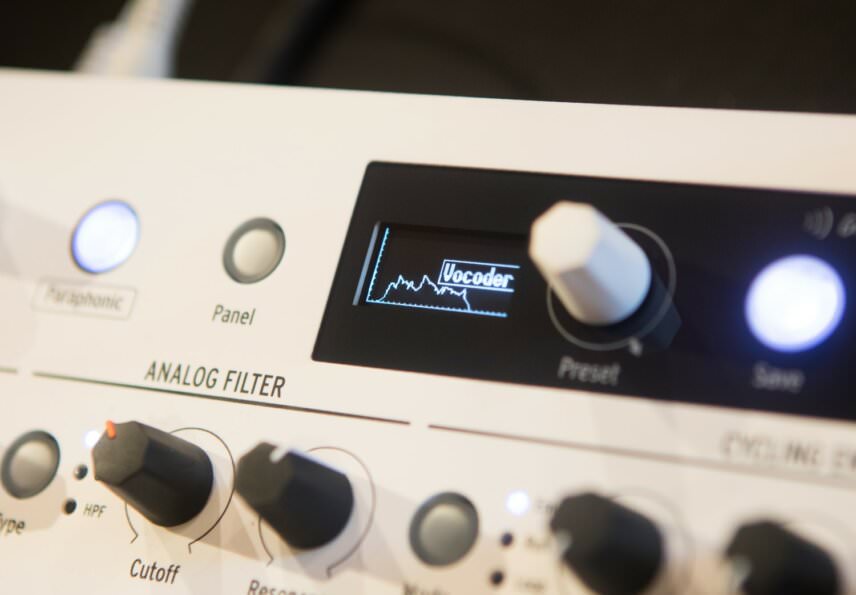
Rochard assured us that it was. Given Arturia’s pedigree with analogue synths, it seemed natural to include an analogue filter.
But why a SEM and not a Steiner-Parker, as Arturia has become famous for?
“The Steiner-Parker has a lot of character,” stressed Rochard, and maybe even too much character. “We wanted something more subtle to let the digital oscillator shine. Also, we liked the SEM filter sound and we wanted a 12dB/octave filter.”
Designer Synth
The MicroFreak has a unique design. From the capacitive touchplate keys to the artful strip between keys and front panel, it doesn’t look like much else out there. Rochard walked us through the design process that Arturia goes through when creating a synthesizer.
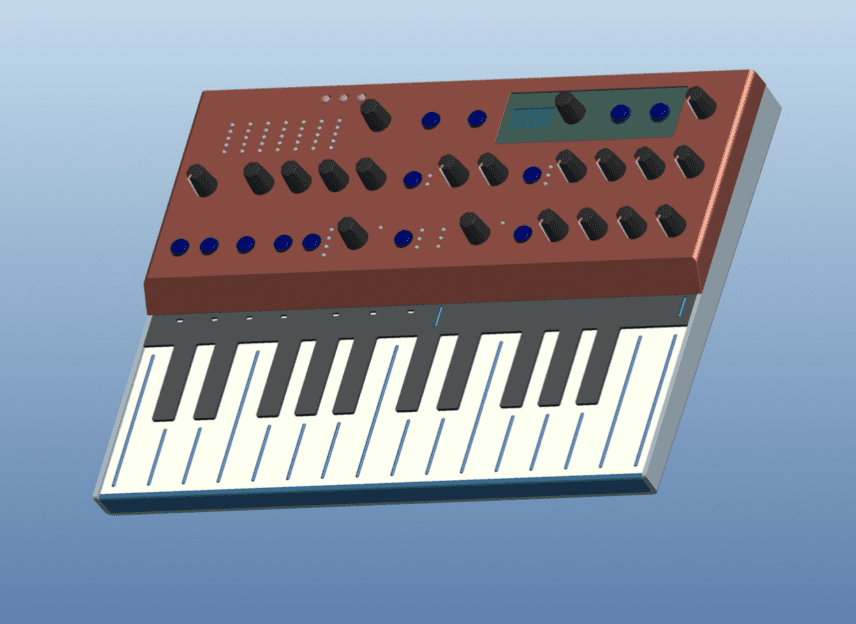
“The development team starts creating the instrument,” he explained. “In thinking about hardware, it’s going to be doing the schematics, doing the routing of the circuit boards, doing the mechanical design. So to do that, first, there’s a phase where we work with a mechanical designer. Usually, we work with Axel Hartman, who’s been doing a lot of the instruments for Arturia in the past seven years. We refine what the instrument is going to look like in terms of aesthetics and placement of the features and everything.
“Once we validate the 3D design, then we can start creating actual prototypes. First, it’s going to be some handmade samples. So either 3D-printed or even just through using foam to give a rough idea of what it’s going to look like, what the size is going to be like, things like that.
“Mechanical things, electronic firmware, the code that is inside the instrument, all of these things are being developed (now). We still have a lot of interactions with the development team at that point but then once we have working prototypes where we can start to test the features, press some buttons and things happen, then there’s a whole phase for us product managers to evaluate whether the instrument makes sense now that we can finally have it in our hands.
“Almost every time there’s something that we missed, or we overlooked, or the workflow is not perfect, but it’s also why prototypes are here. So you see how you can refine it. You try to not change it too much because the mechanical design is kind of a constraint. You don’t want to completely change the concept. It’s more on details that we need to refine.
“There are bugs (to solve) and there are feature requests (to) add. The beta testers come into play and they also provide their own scope as actual users. They’re not part of the company so they don’t have this bias that we may already have, knowing what the thing is going to be. They have a new eye on the instrument.
“Once we have something that we feel is final, it’s been tested and everything works, then we can start to think about the launch of the instrument.”
Future Updates
Given the name is MicroFreak, and the Brute line includes not only a Micro but Mini, Matrix, and Poly versions, we asked if we could expect something similar for the Freak. While he declined to comment on future projects, he did let us know that there should be more updates coming for the MicroFreak.
“I would say that hardware used to be a lot more rigid, in a sense,” said Rochard. “Now instruments are made in a way that it’s easy to update them. First, they all have a USB port and update capability, but also that they are designed with a database in mind, for the most part.”
This is great news, considering that we’ve already gotten a vocoder and three Noise Engineering engines in firmware updates.
Lastly, Rochard wants to know what kinds of synthesizer engines you’d like to see arrive in future updates. Please let us know in the comments below – Arturia will be reading.
